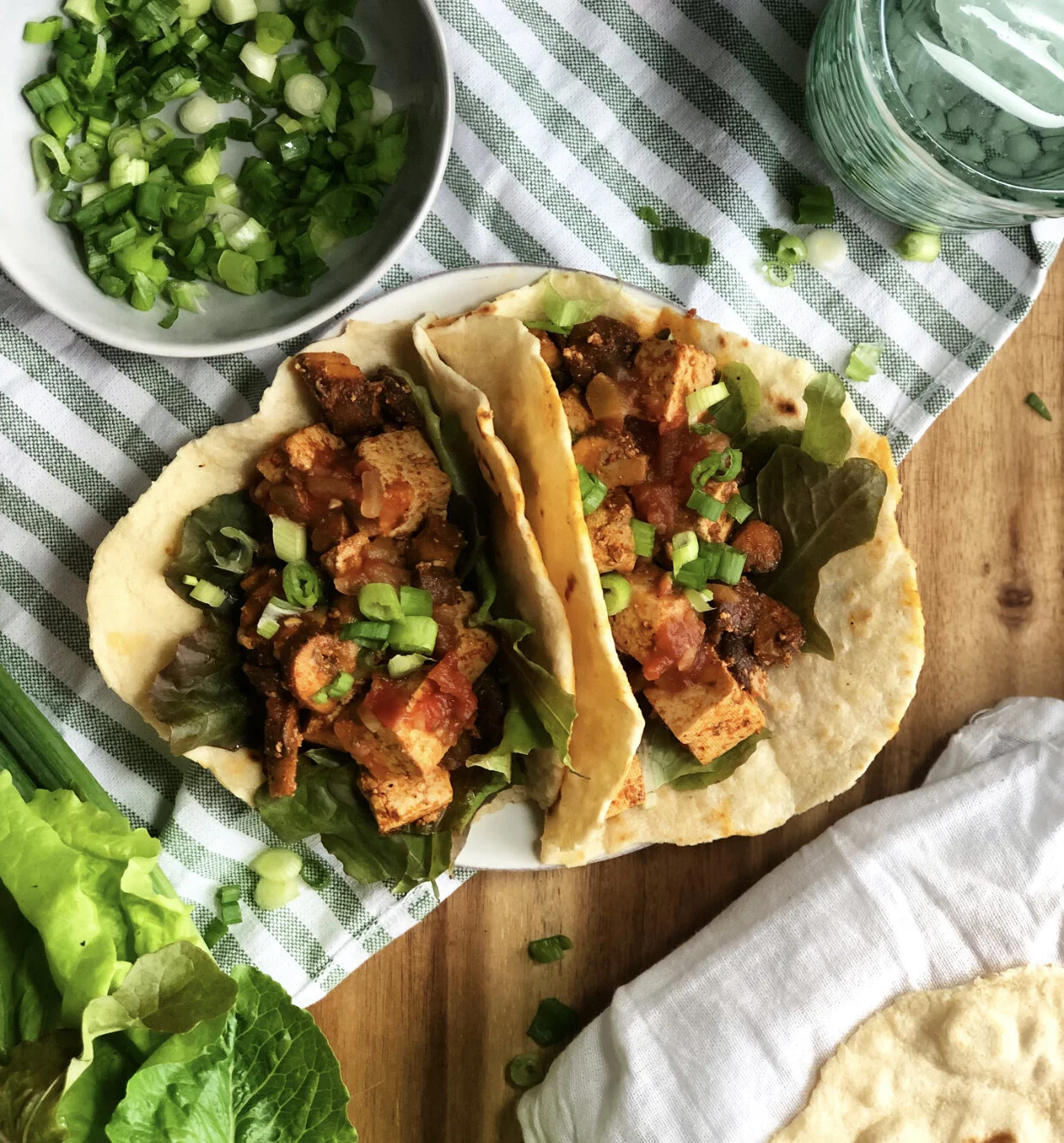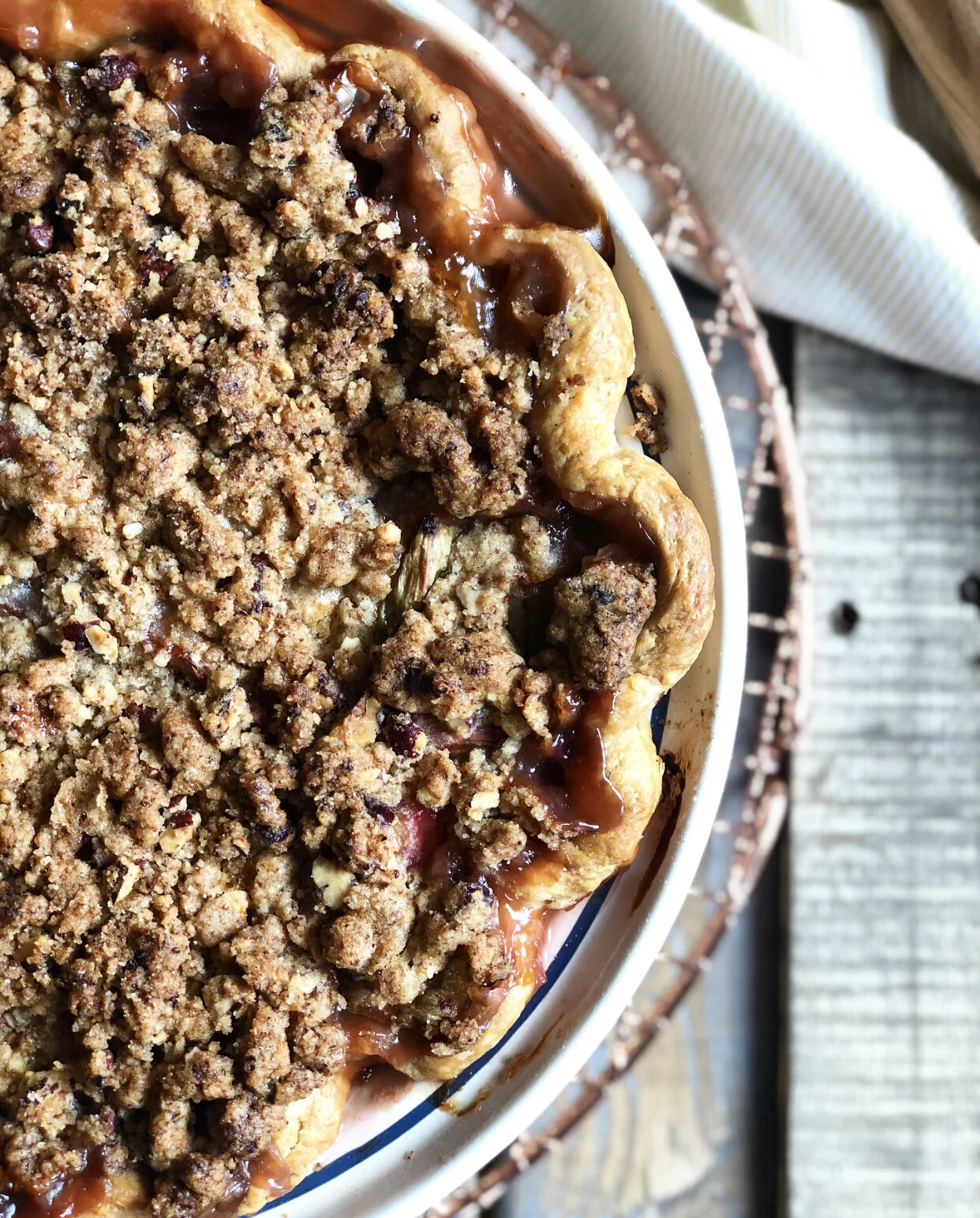In the Northern and Mid-Western U.S., the month before gardening season begins can feel like it lasts an eternity. BUT spring is finally here and it has brought along a whole slew of delicious fruits and veggies.
Read MoreIf you're trying to eat more sustainably, you've probably noshed on your fair share of tofu. But how sustainable is tofu? In this post, I'll cover all the sustainability concerns surrounding your favorite vegan protein.
Read MoreI usually go out for a fancy dinner on Valentine's Day, but that isn't possible this year (hi, pandemic). If you're also staying in for Valentine's Day, I have you covered. Breakfast, lunch, dinner and dessert are served!
Read MoreSweet potatoes are tubers native to South America that are present in cuisines all around the world. Although they have a similar background and appearance as regular potatoes, the two are only distantly related. In this post, I'll tell you all you need to know about the most common sweet potato varieties!
Read MoreMost potato varieties fall into one of three major categories: starchy (high-starch), waxy (low-starch) or all-purpose (medium-starch). Unfortunately, grocery stores typically don't categorize their potatoes by starch content. Instead, they sort potatoes into seven types: russet, yellow, white, purple or blue, red, fingerling and new. Each of these types includes many varieties of potatoes that share a similar appearance and starch content.
Read MoreIf I had a dollar for every time my mother asked me the difference between butternut squash and acorn squash, I'd be a rich woman. In this post, I give you the DL on every squash you'll find at the market this fall!
Read MoreThe world of beans can be confusing. Are green beans related to dried beans? And what about purple beans? And wax beans? In this post, I explain the ins and outs of all things snap beans!
Read MoreIt's finally tomato season. From softball-sized sandwich-toppers to lop-sided heirlooms to bite-sized snacks, tomatoes come in all shapes and sizes. In this post, I'll walk you through what's what in the world of tomatoes.
Read MoreForaging is the process of searching for and collecting wild-grown (rather than cultivated or farmed) foods. Although this hobby may seem daunting, anyone can forage with a little help from a local wildlife expert. In this post, I’ll explain how to start foraging, describe some signs of poison plants and tell you all about the most popular plants to forage.
Read MoreSpring has almost sprung, so I have fresh herbs on the mind. But with dozens of herbs to choose from, things can get complicated. In this post, I describe the flavors and pairings for my favorite herbs.
Read MoreCabbages are a v underrated vegetable in my opinion. They have a neutral flavor and satisfying crunch and develop a smooth, buttery texture when cooked. In this post, I’ll explain the similarities and differences among my favorite cabbage varieties.
Read MoreHaving reached the end of a decade, it’s the perfect time to reflect on where the blog has been and where it’s going. This blog has been a creative outlet for me over the past year and a half and I am so grateful for all my readers and fans! In the new year, you can look forward to more recipes, more sustainability tips and more (gorgeous) photography. But before moving forward, let’s take a moment to look back at your favorite posts of 2019.
Read MoreEating a wider variety of apple cultivars can encourage more diverse agriculture that is more resistant to pests and disease. In this post, I'll tell you all about just a few of the thousands of apple varieties available across the world.
Read MoreChilly mornings are starting to creep in, PSLs have infiltrated coffee shops everywhere and autumn fruits and veggies will be hitting the farmers markets soon. In this post, I’ll tell you all about the produce pals you need to be eating this fall.
Read MoreIf you're a meat eater, you've probably happened upon beef or steaks labeled "free-range." In the U.S., many free-range cattle are born and raised on the western plains, called "rangeland." In this post, I'll tell you all about the ecology, economics and politics of rangelands of the U.S.
Read MoreProduce absolutely pops off during summer in the Midwestern U.S. Farmers markets are thriving and farm stands seem to occupy the corner of every other block. In this post, I’ll tell you all about my favorite summer fruits and veggies and how I like to eat them.
Read MoreIt's the height of the season for citrus fruits, which means that farmers markets in the Sun Belt of the U.S. are bursting at the seams with these delicious snacks. If you live in citrus-producing areas, it's the perfect time to seek out local and organic varieties.
Read MoreIf you live in a chilly climate, it's easy to assume you can only get local produce during warmer months, BUT a lot of hearty fall vegetables can actually last all winter long in local storage.
Read MoreIn the U.S. we're kind of banana crazy. We turn them into smoothies and desserts, slather them with PB, put 'em on sammies, transform them into bread and so much more. In this post, I'll explain the major sustainability issues associated with bananas.
Read More



















